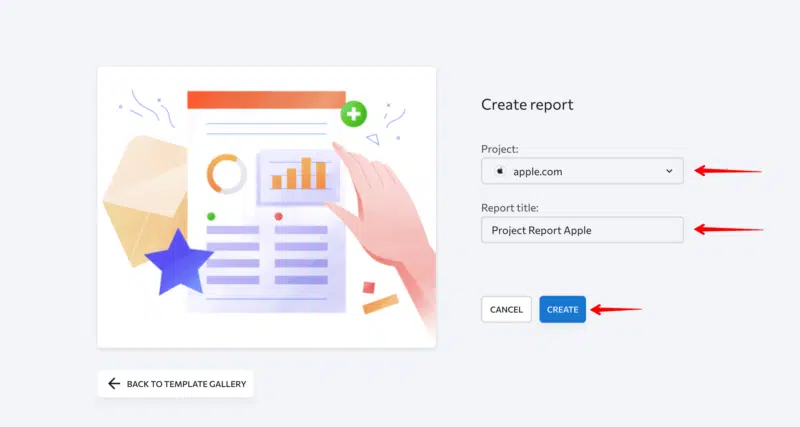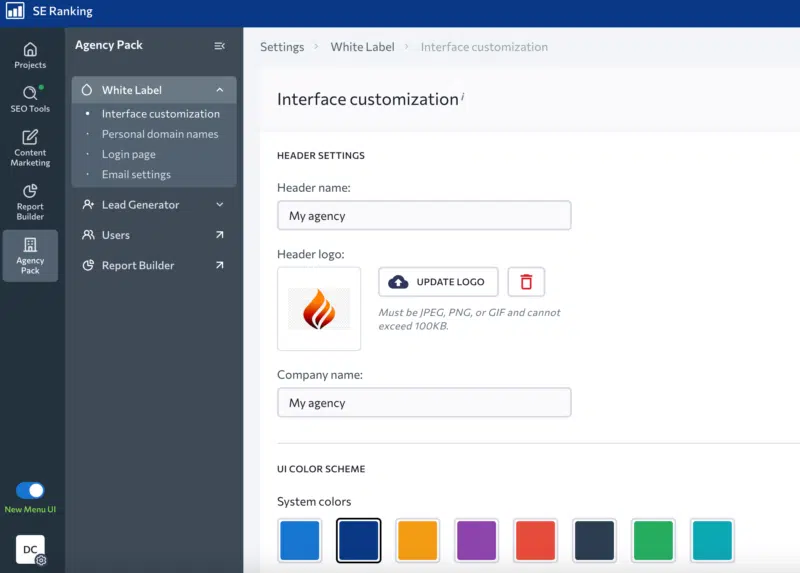Automated SEO reporting for clients: The agency’s guide


SEO agencies place a high value on client satisfaction and trust. This is why comprehensive reporting can make a huge difference. It not only demonstrates the value of your services but also serves as a critical communication channel between your agency and your clients.
SEO reports are integral to agency work, report creation being one of the primary challenges associated with it. Manually collecting data for numerous client projects from different data sources, such as traffic stats, search rankings, technical issues, backlinks and competitive analysis, consumes valuable time.
Fortunately, there’s a solution: automated SEO reports.
By using SEO report templates, setting up a dashboard in Looker Studio (or other similar platforms), or even granting your clients access to SEO software data points, you can save loads of time. It also fosters strong client relationships built on transparent communication and mutual respect.
Here are some benefits and challenges of automated SEO reporting and different ways to set up a streamlined reporting process for your clients.
What is automated SEO reporting?
Automated SEO reporting is the process of using digital tools to generate, compile, and deliver SEO performance reports to clients. This results in minimal manual effort.
The main automated SEO reports benefits are:
- Data accuracy: Automation reduces the likelihood of human errors when collecting and organizing data. This is especially beneficial when your agency manages multiple clients, as it’s easy to get overwhelmed.
- Time-saving: Automation frees up your team’s time, allowing them to focus on other crucial tasks, such as implementing SEO strategies and conducting SEO experiments.
- Streamlined communication with clients: With automation, you can regularly deliver reports to clients’ inboxes at a set time. This can be challenging if done manually instead.
Like any process, automated SEO reporting has its challenges, one of the main ones being the additional cost of automation tools. Dedicated reporting solutions can be somewhat costly and can place additional strain on your agency’s budget. Nevertheless, you can always find SEO software for your daily SEO operations, including built-in reporting capabilities.
Thankfully, these disadvantages are easily outweighed by the pros mentioned above.
Now, let’s explore how to set up automated SEO reporting in just three simple steps.
How to set up automated SEO reporting in three steps
Setting up automated reports can seem like a daunting task. But by investing a bit of time in this process, you can save your team’s resources so they can spend more time working on other important tasks. This greatly reduces the time required for successful reporting.
Step 1: Defining KPIs
The foundation of any successful reporting system is a clear understanding of KPIs, as they ensure that your reporting efforts stay focused and relevant.
Identify the metrics that most closely align with the client’s goals. Some of these metrics include increased website traffic, higher search engine rankings, or improved conversion rates. This will determine what information you need to include in the SEO report. For example, if the defined KPIs are local search visibility and organic traffic growth, the report should contain a detailed overview of the site’s local positions and visitor analytics.
Remember: The choice in KPIs depends on the industry, business model and specific goals of the company. For a local bakery, some SEO KPIs worth looking into are local search visibility and organic traffic growth. Meanwhile, a fintech product website could prioritize SEO KPIs like organic keyword rankings, domain authority and the number of leads.
Once you have defined your KPIs, you can move on to the main step: creating an automated SEO report.
Step 2: Creating the report
This is one of if not the most, crucial step. It needs to be approached with great care.
As mentioned earlier, the data included in your SEO reports should align with your client’s goals and preferences. But most SEO reports made for clients include information on metrics like keyword rankings, traffic, backlinks, competitor overviews and the website’s technical health.
By automating the reporting process, you can build a thorough but concise report (with all of these sections) in minutes. For example, SE Ranking’s Report Builder generates reports with easy-to-read graphs based on data from SE Ranking’s Rank Tracker, Website Audit, Local Marketing tool and other tools. Just create a project with the client’s website, launch a couple of audits, and connect Google Analytics and Google Search Console accounts to get reports on website traffic and conversions.
Within the tool, you can use either the modular approach or the ready-to-go report template.
With the first option, you’re free to decide what sections and data to include. Just choose the pre-created project alongside your client’s website, select the reporting period and start crafting your report.

Add the cover page, the table of contents and the sections with data on website health, rankings, traffic, keyword research, competitor analysis, etc. After that, customize the report with your agency’s branding and your client’s logo. To help your client understand your progress better, you can also leave comments on the data next to the graphs.

Another option is ready-to-go reports, which include predefined sections. There’s no need to add them manually. Just choose the relevant report template from the list and select your project. And that’s it. You have a ready report with your data. Don’t forget to add the final touch by adjusting the **** range and personalizing the automated ranking report for your agency. You can also easily add additional sections to any template if needed. This process typically takes 5-10 minutes.

Keep in mind: Clients may occasionally require video presentations or recorded explanations alongside automated ranking reports for a more personal touch. Your objective is to effectively showcase your work’s results to the client and provide options that suit their preferences.
Step 3: Select your preferred report format
Once your report has been generated, it’s time to deliver it to the client. Choosing the right report delivery method is a crucial part of meeting your client’s expectations. This step can also be easily automated. Here’s how:
- Automatically send PDF reports. Many reporting tools offer the option to send PDF reports to your clients’ emails automatically, providing a convenient and hassle-free solution. In SE Ranking’s Report Builder and other comparable platforms, you can set up a report delivery schedule for your clients. You can choose the frequency and delivery day and enter your client’s email. Once configured, you no longer need to worry about sending reports manually; the tool handles it all for you.
Remember that the reporting frequency is often established in the early stages of your cooperation with the client. Your automated tool absolutely must accommodate this frequency.

- Data dashboard access in Looker Studio. Some clients prefer using Looker Studio, a platform with customizable dashboards, to view automated SEO reports. So, it’s a good idea to offer this option to your clients. You can use Google Looker Studio to showcase ranking data and website tech audit results, along with other metrics from your KPI list. Simply connect the data sources and share the link with the client, allowing them to access the latest report data anytime. This option requires more setup but provides a higher level of transparency.

- White Label access. If you have SEO-savvy clients who want to delve deeper into the data and explore the ongoing SEO progress on their own, you can provide them with custom access to the SEO platform. White Label access is the best option for this purpose. This feature allows you to customize the platform to match your brand identity. You can change colors, logos and even configure your personalized domain name. This customization gives the platform the appearance of being your own. After completing the customization, you can share custom access with your clients by adding additional user seats to the platform. Many White Label SEO tools let you customize each client’s access. You can define which tools they can use and the amount of data they can view in their account.

Recap
Automated SEO reporting is not just a time-saving solution; it’s a means to enhance the overall client-agency relationship. By automating your reporting processes, your agency can deliver more accurate and timely information to your clients, thereby demonstrating your commitment to their success.
Don’t hesitate to incorporate the steps outlined in this article into your reporting process. Pick a reliable tool that meets all your automated SEO reporting needs and communicate with the client to craft an SEO report that incorporates all their preferences.
Exclusive Black Friday offer for new clients
Save an extra 20% on all annual plans and add-ons, in addition to the year-round 20% discount, with SE Ranking’s Black Friday deal.
Source link : Searchengineland.com



